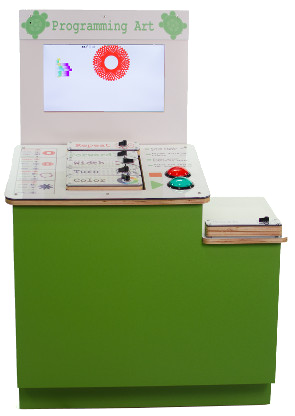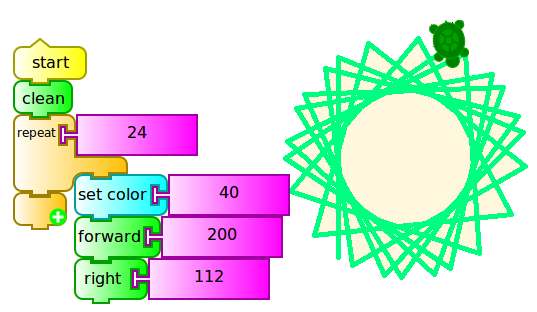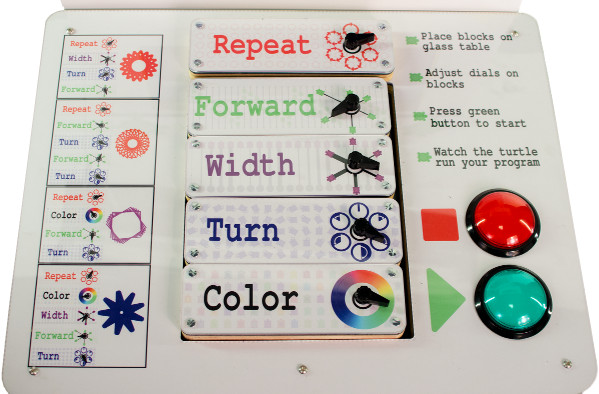Create code by touch, not by text
The Programming Art exhibit uses large, colorful pictorial blocks paired with simple dials to control a spirograph-style drawing program. Each block acts as a programming function, while the dial sets its parameter. All electronics are safely enclosed within a sturdy case, and the blocks themselves are crafted from durable wood with steel ball bearing shafts for long-lasting smooth use. With no batteries, potentiometers, or fragile components inside the blocks, there’s nothing that can break during hands-on play!

Watch the video demo to learn more about this engaging exhibit.
This exhibit introduces foundational computer programming concepts in an intuitive and tactile way:

Each programming block is a physical, tactile piece featuring clear images and dials—perfect for young learners.
The kit includes six programming blocks:

At Mike’s Interactives, we know the challenge isn't just building an engaging exhibit it’s keeping it working for years of visitor interaction. Our exhibit features:
Want to tailor the exhibit to your audience? We provide all artwork and assets so you can modify languages, graphics, or text. For deeper customization or integration into a larger exhibit hall, we offer full build instructions and material lists, letting you design your own casings and wiring if desired.
Contact us to discuss your needs and bring Programming Art to your space!